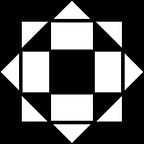Prehistoric Graffiti?
Why did our cave-dwelling ancestors decorate their walls with so many paintings of animals?
The Chauvet Caves, in France, contain excellent early examples of prehistoric ‘parietal art’, which is a term for wall paintings and murals. The paintings were made and added to over a long period from 28,000, perhaps earlier, to 17,000 BCE. They still have aesthetic value today, having a lovely sense of line. They are clear and very well observed, mainly depicting animals.
There is a particularly pleasing ‘sketch’ of a bear, rhinoceros, auroch and a row of different horses’ heads showing variations in the species, almost like a catalogue for identification. There is also a human hand print, using negative space to define the hand. This early kind of printing was achieved by the pigment being chewed and sprayed from between the teeth over the splayed hand that acted as a stencil.
Some of the most famous and best examples of prehistoric cave wall art can be found in the Lascaux Caves, also in France. These paintings are similar to the parietal art at Chauvet Caves, but are more recent, being made over a period from around 16,000 to 14,000 BCE.
